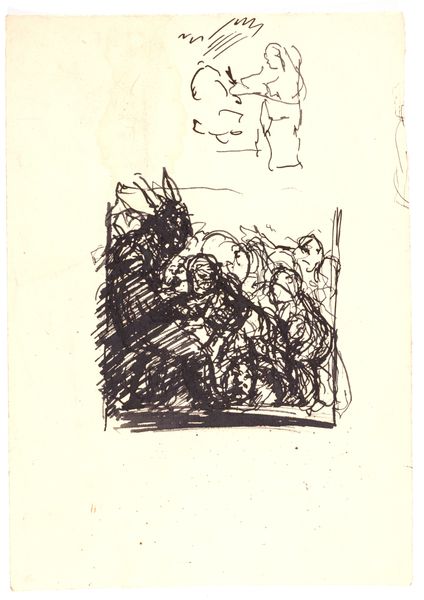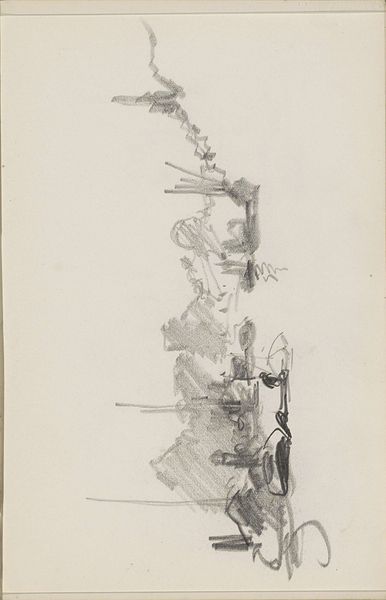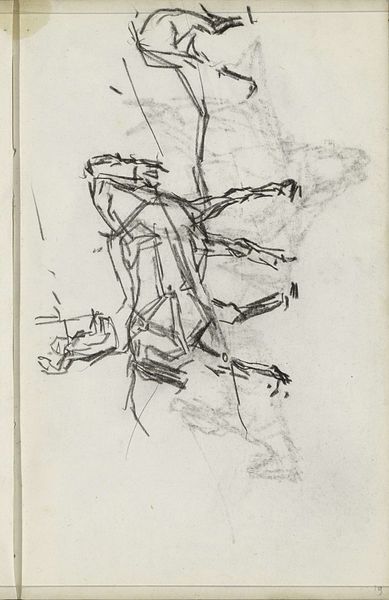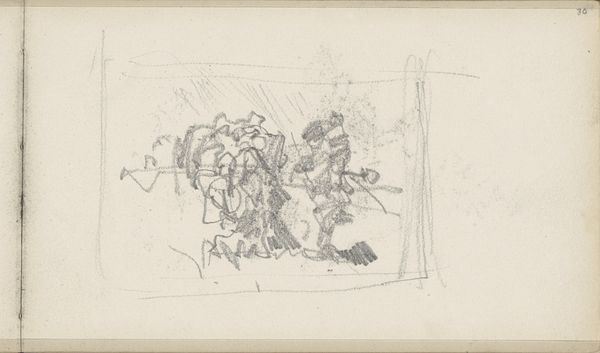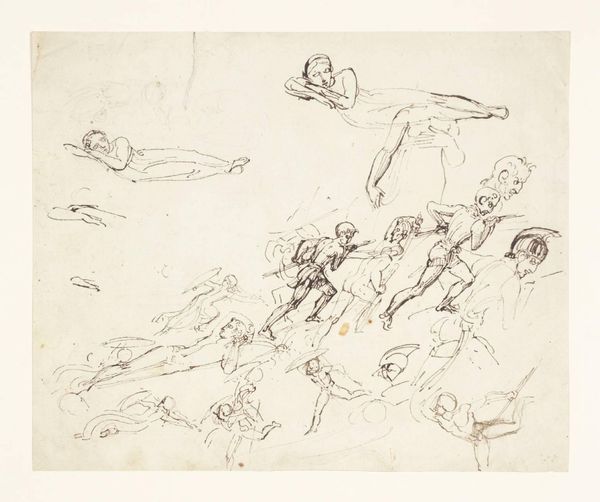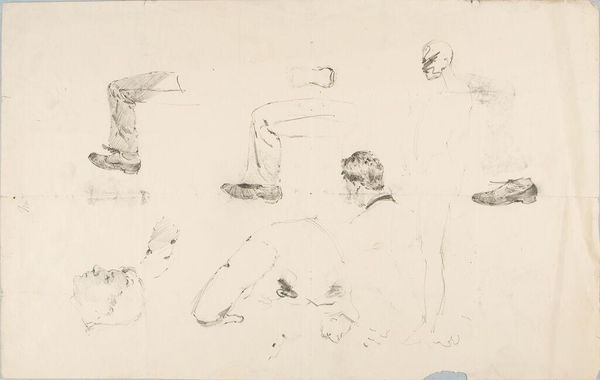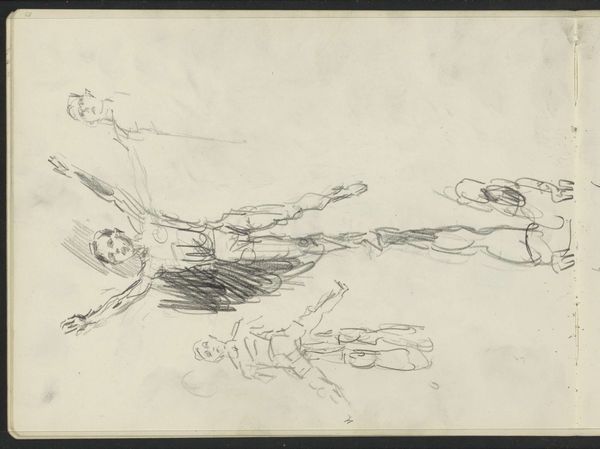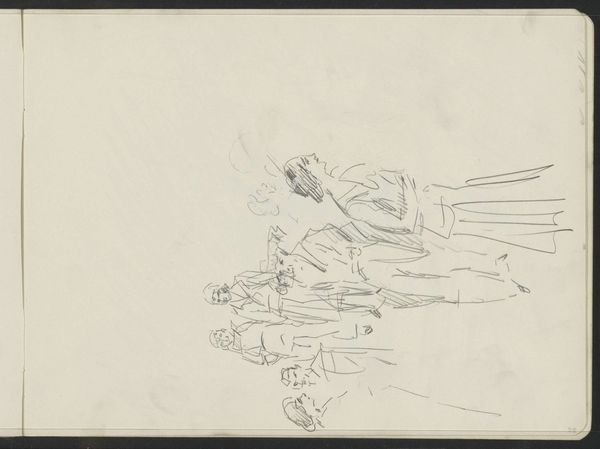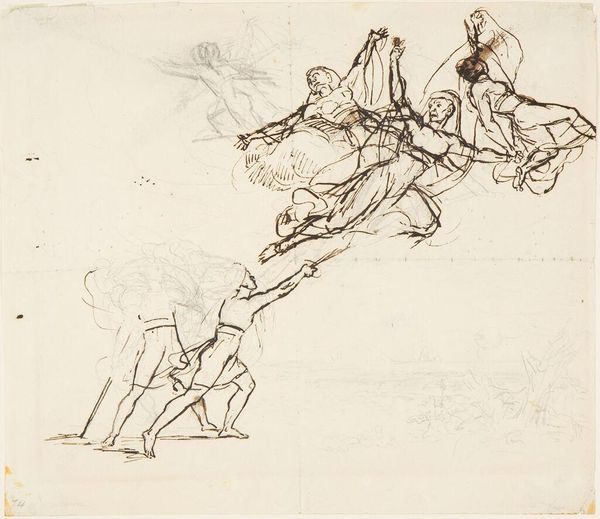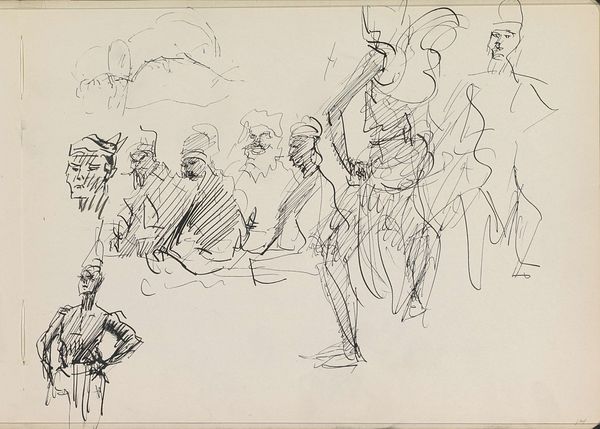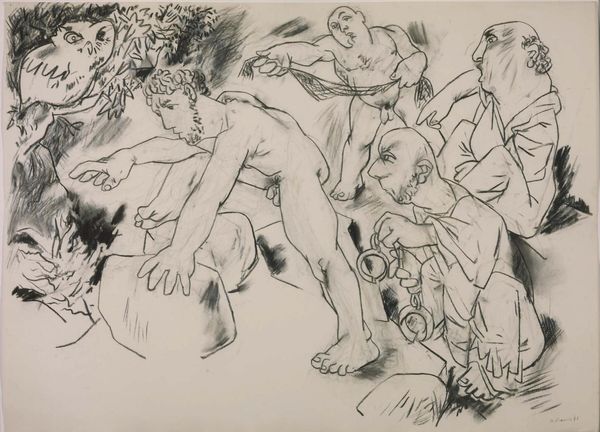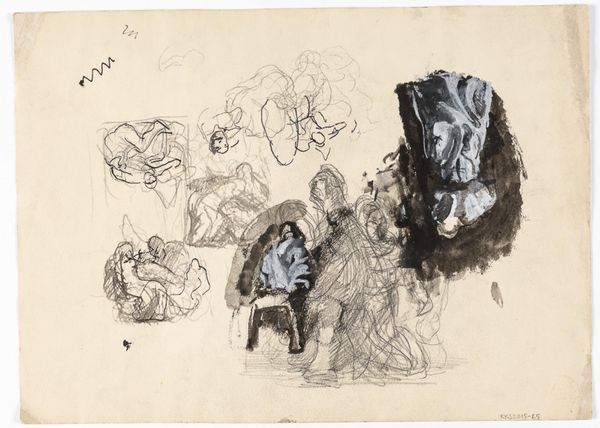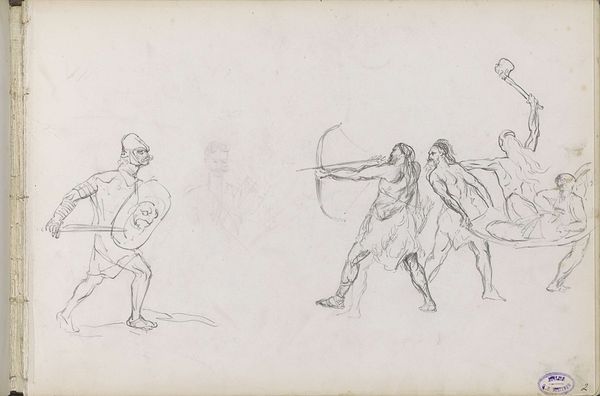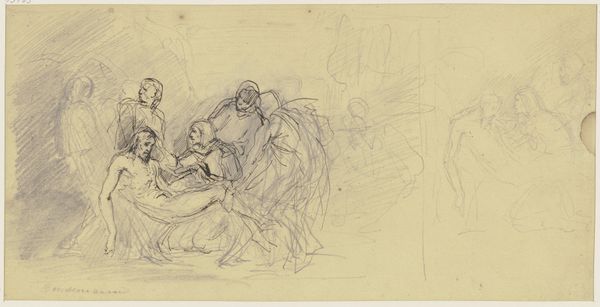
#
light pencil work
#
pencil sketch
#
incomplete sketchy
#
personal sketchbook
#
idea generation sketch
#
sketchwork
#
ink drawing experimentation
#
sketchbook drawing
#
sketchbook art
#
fantasy sketch
Dimensions: height 538 mm, width 788 mm
Copyright: Rijks Museum: Open Domain
Curator: What strikes me immediately is the sheer rawness. It feels like looking into the artist's active thought process, that liminal space of creation before a concept fully solidifies. Editor: Here we have Aat Verhoog's "Hommage à Caravaggio," created sometime between 1965 and 1980. The work itself is a sketch, seemingly in pencil or a similar medium, and currently resides here at the Rijksmuseum. Curator: "Hommage" indeed. I see the figures writhing in that signature Caravaggio chiaroscuro, a dramatic dance between light and shadow that speaks volumes about power dynamics and emotional intensity. You can almost feel the weight of history bearing down on them. What do you make of the artist’s choice to use, what appears to me, a rudimentary pencil? Editor: I see that as deliberate, foregrounding the labor involved. It avoids the slickness sometimes associated with high art, instead emphasizing the process. It brings it down to earth—almost suggesting this isn’t about ideal forms or immortal fame; instead, what resonates is a sort of working-class ethos inherent to pencil sketch work. How it is made emphasizes materiality. The repeated figures underscore the toil perhaps. Curator: I'd argue it goes beyond labor—consider how Caravaggio himself challenged societal norms through his art, depicting saints as ordinary people and shedding light on marginalized communities. Verhoog’s use of a simple sketch then becomes a powerful act of democratization, stripping away the layers of elitism often associated with art. Editor: Interesting. I think you give this unfinished form the weight of social importance, where the medium itself embodies defiance, I think what interests me most about his Homage to Caravaggio, are its humble means to express the social reality with bare materials. But tell me, can a drawing challenge social stratification? Is this about the power and struggle of marginalized communities from past to present. Curator: Absolutely! Think about how visual representations shape our understanding of identity, and about representation itself: art's capacity to perpetuate stereotypes and to challenge them. Verhoog engages us in visual activism, which promotes awareness, empathy, and hopefully social change. Editor: I follow your line of thought here. I was initially focusing on art, materials, production, and on society; yet you also offer something compelling with regards to gender, race, identity, or perhaps on decolonial and queer perspective… Thank you.
Comments
No comments
Be the first to comment and join the conversation on the ultimate creative platform.
